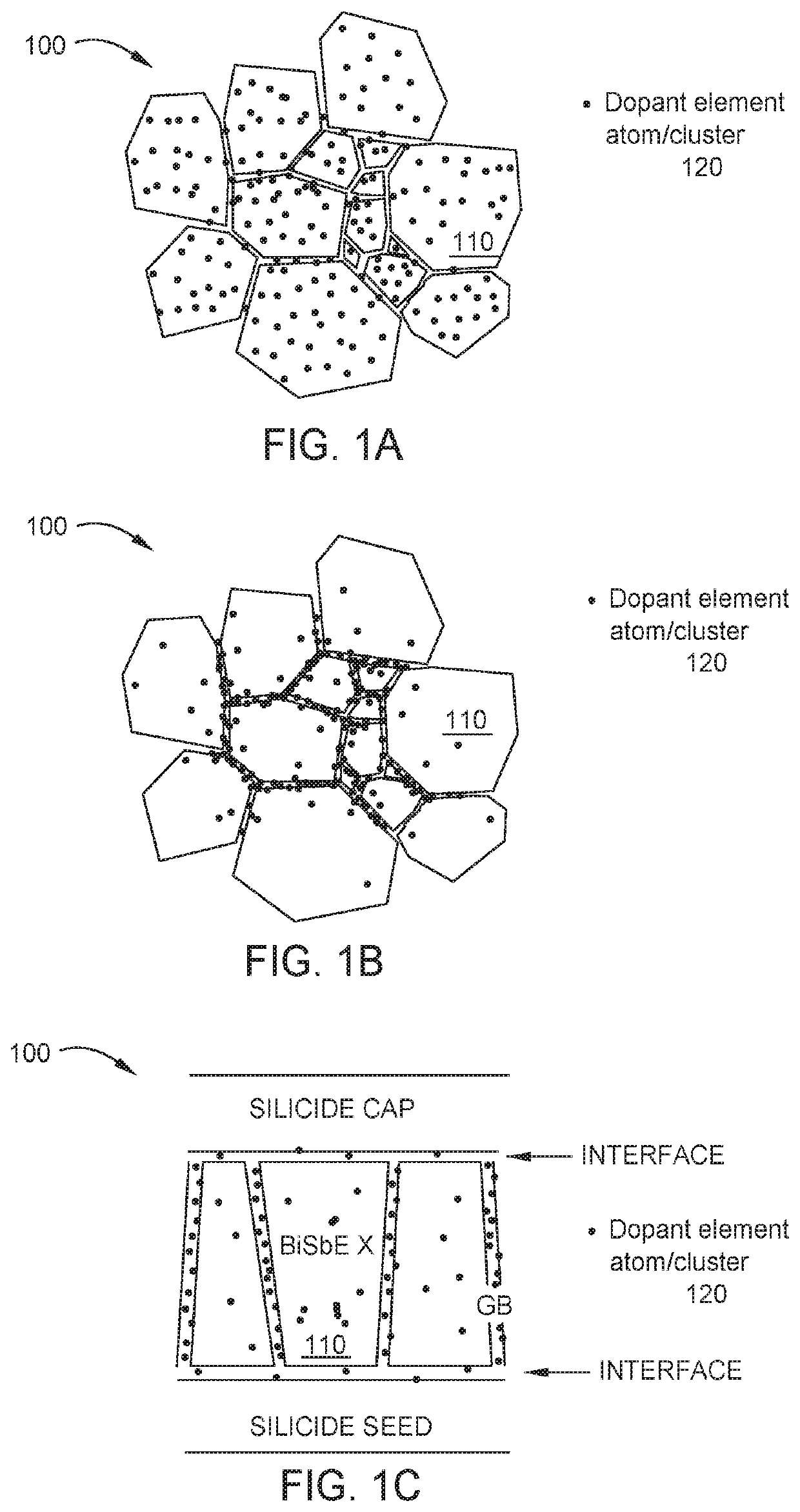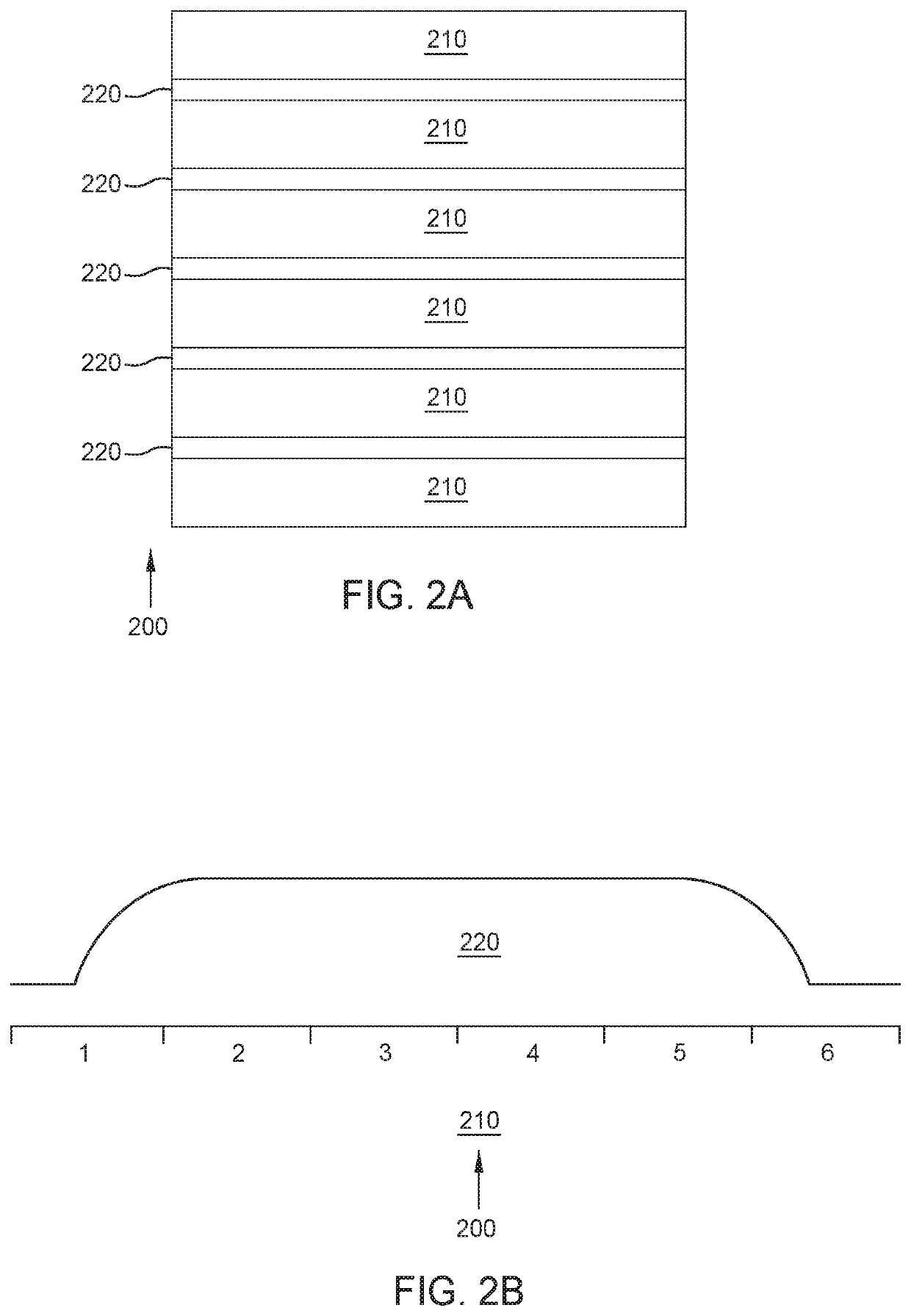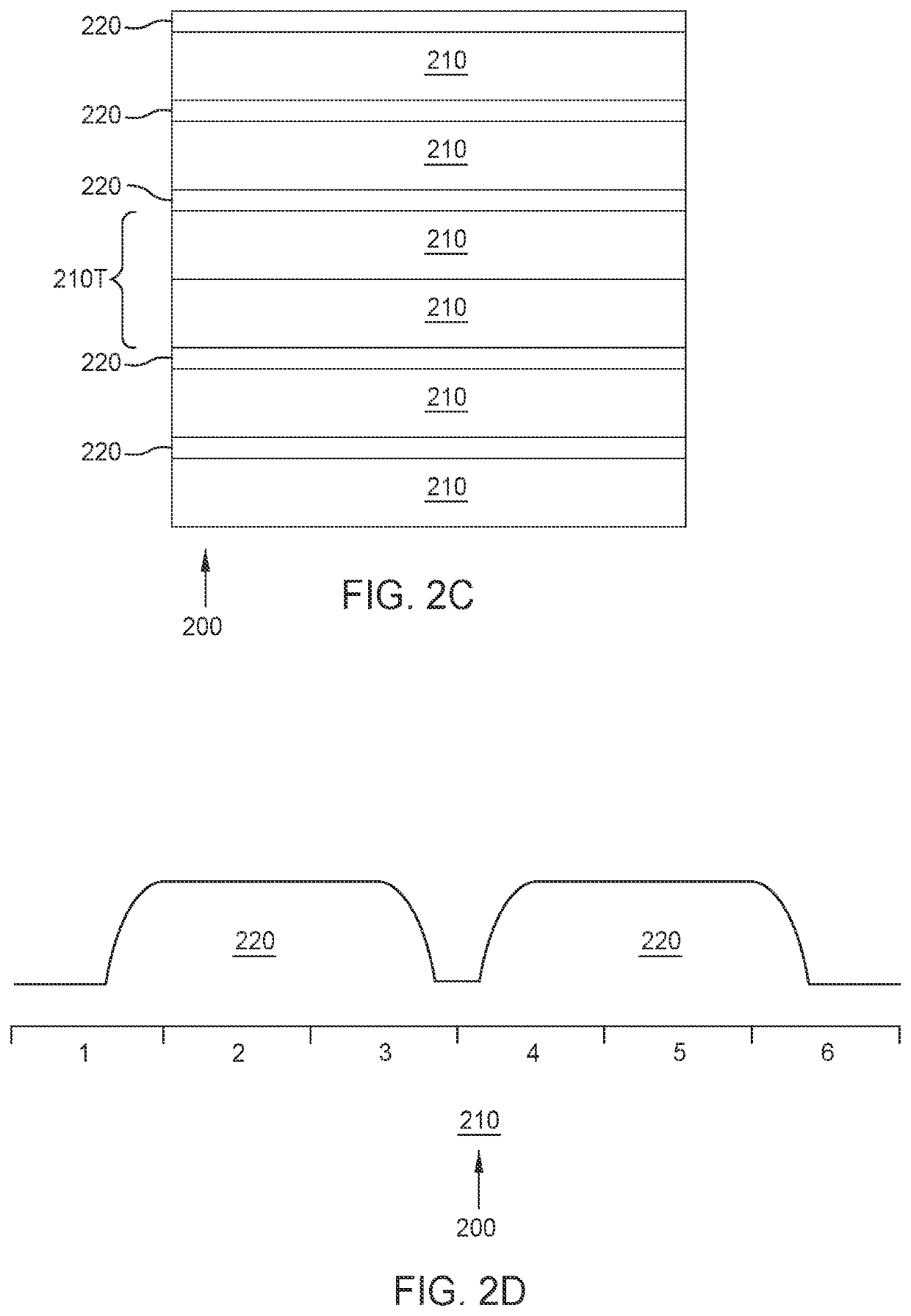Bismuth antimony alloys for use as topological insulators
- Summary
- Abstract
- Description
- Claims
- Application Information
AI Technical Summary
Benefits of technology
Problems solved by technology
Method used
Image
Examples
example 1
[0061]FIG. 3 shows 2-theta XRD scans vs. logarithm of the intensity of the BiSb orientation of various stacks 310-360 of BiSbE alloy layers comprising a non-metallic dopant element of Si. Each of the stacks 310-360 comprised a seed layer of a NiFeCu-silicide layer formed to a thickness of about 18 Å and a copper alloy (CuAgNi) layer formed to a thickness of about 1 Å, a BiSbE alloy layer formed to a thickness of about 100 Å, an interlayer of a NiFe-silicide layer formed to a thickness of about 14 Å, and a cap layer of SiN formed to a thickness of 60 Å. The BiSbSi alloy layers comprised a plurality of BiSb lamellae layers and a plurality of Si lamellae layers in which the dopant element comprised Si. Each of the BiSb lamellae layers comprised about 90 atomic % of Bi and about 10 atomic % of Sb.
[0062]The BiSbE alloy layer of stack 310 was formed by depositing six BiSb lamellae layers with each BiSb lamella layer deposited to a thickness of about 15 Å and by depositing three Si lamella...
example 2
[0069]FIG. 4 shows 2-theta XRD scans vs. logarithm of the intensity of the BiSb orientation of various stacks 410-460 of BiSbE alloy layers comprising a metallic dopant element of CuAgNi. The BiSbE alloy layers comprised a plurality of BiSb lamellae layers and a plurality of lamellae layers of metallic dopant element of CuAgNi. Each of the BiSb lamellae layers comprised about 90 atomic % of Bi and about 10 atomic % of Sb. Each of the stacks 410-460 comprised a seed layer of a NiFeCu-silicide layer formed to a thickness of about 18 Å, a BiSbE alloy layer formed to a thickness of about 100 Å, an interlayer of a NiFe-silicide layer formed to a thickness of about 14 Å, and a cap layer of SiN formed to a thickness of 60 Å.
[0070]The BiSbE alloy layer of stack 410 was formed by depositing six BiSb lamellae layers with each BiSb lamella layer deposited to a thickness of about 15 Å and by depositing three CuAgNi lamellae layers with each CuAgNi lamella layer deposited to a thickness of about...
example 3
[0077]FIG. 5 shows a plot of the TOF-SIMS net Intensity for dopant E-Cs+ clusters across the BiSbE alloy layer for dopant elements of NiFe, Si, and CuAgNi as a function of sputter time in seconds. BiSbE sample 510 with atomic percent content of a dopant element of silicon of about 17%, a BiSbE sample 520 with atomic percent content of a dopant element of CuAgNi of about 14%, a BiSbE sample 530 with atomic percent content of a dopant element of NiFe of about 14%. BiSbE sample 510 was formed with a modulated distribution of Si dopant element. BiSbE sample 520 was formed with an edge distribution of CuAgNi dopant element. BiSbE sample 530 was formed with an edge distribution of NiFe dopant element. The net intensity is the absolute intensity of the E-Cs+ cluster of BiSbE minus the intensity of E-Cs+ cluster of a BiSbE which contains no dopant element. Each of the samples 510-530 included a NiFeCu silicide seed layer of about 16 Å, about 1 Å of Cu, about 7 Å of NiFe, about 1 Å of Cu, an...
PUM
| Property | Measurement | Unit |
|---|---|---|
| melting points | aaaaa | aaaaa |
| temperature | aaaaa | aaaaa |
| melting point | aaaaa | aaaaa |
Abstract
Description
Claims
Application Information
 Login to View More
Login to View More - R&D
- Intellectual Property
- Life Sciences
- Materials
- Tech Scout
- Unparalleled Data Quality
- Higher Quality Content
- 60% Fewer Hallucinations
Browse by: Latest US Patents, China's latest patents, Technical Efficacy Thesaurus, Application Domain, Technology Topic, Popular Technical Reports.
© 2025 PatSnap. All rights reserved.Legal|Privacy policy|Modern Slavery Act Transparency Statement|Sitemap|About US| Contact US: help@patsnap.com



